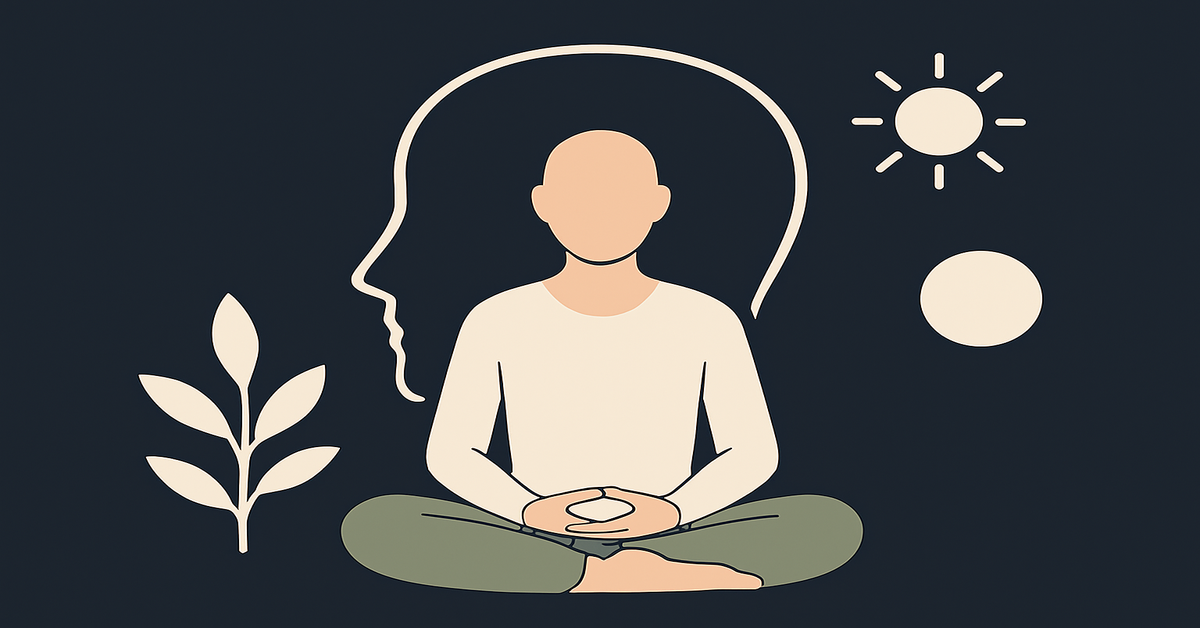In a world where individuals cycle through reinvention, migration, and shifting cultural landscapes, the idea of Iganiny emerges as a symbolic anchor—an emblem that represents inner evolution and the quiet, ongoing negotiation between self and society. Within the first moments of encountering the concept, one finds a guiding framework for understanding how personal transformation is mirrored by cultural reflection. People instinctively seek symbols to articulate what words struggle to contain: the feeling of growing, shedding, remembering, and becoming. Iganiny stands at this crossroads, offering a lens that captures both the intimate drama of personal change and the broader rhythms of collective identity. In its most essential interpretation, Iganiny is the imagined or emerging symbol of a universal journey. Its significance does not arise from a fixed historical origin but from its capacity to embody the cyclical nature of the human condition—growth, rupture, renewal, reintegration. As contemporary societies undergo rapid transformations, individuals find themselves navigating cultural multiplicity, evolving identities, and internal rebalancing. Here, Iganiny functions as a conceptual motif that holds these tensions gracefully. Throughout this long-form exploration, we will examine why symbols like Iganiny resonate across cultures, how they serve as psychological tools, and why they remain essential in a world increasingly defined by fragmentation and hybridity. The purpose is not to historicize Iganiny but to illuminate what it represents: the unending interplay between who we are, who we seek to become, and the cultures that shape and reshape us.
The Enduring Power of Symbolic Thought
Across civilizations, symbols have persisted as silent architectures of meaning. Their significance lies not in explicit instruction but in suggestion—an ability to condense multilayered spiritual, psychological, and cultural truths into a form that is graspable yet profound. Iganiny belongs to this lineage. Even without ancient lineage, it draws on the timeless human impulse to craft visual or conceptual anchors for transformation. Anthropologists often argue that symbolic systems form the bedrock of cultural storytelling, governance, belief, and identity. The utility of a symbol such as Iganiny lies in its openness; it does not dictate meaning but invites it. Its interpretive flexibility allows people of different backgrounds to see themselves within it. This quality is what has allowed many cultural symbols—spirals, circles, pillars, knots, and carvings—to transcend their origins and take on new layers of collective interpretation across continents. Iganiny can therefore be imagined not as a replacement for existing symbols but as a modern continuation of this long tradition, suited to contemporary societies where cultural boundaries are fluid and identities increasingly hybrid. What gives a symbol power is not its age but its ability to address the emotional and existential needs of the era that embraces it.
Iganiny and the Psychology of Inner Evolution
At the psychological level, symbols simplify complexity. They provide individuals with a mental container to process intangible experiences—grief, transformation, awakening, self-repair. Iganiny, as a symbol of inner evolution, represents the slow, deliberate process through which people reinterpret their pasts, adjust their beliefs, and cultivate new relationships with themselves. Modern life has amplified this need. The average person now moves through more identity shifts in a decade than their ancestors might have navigated in a lifetime. Career changes, digital lives, migration, shifting values, loss of traditional community structures—all contribute to what psychologists call “continuous identity reconstruction.” Iganiny offers a conceptual mirror for that process. It’s a reminder that change is not an event but a rhythm. It implies that renewal is not a rupture but a returning—each transformation a loop that brings one closer to understanding. In therapy rooms, spiritual circles, and introspective practices, people often rely on metaphors to articulate change. Iganiny fills precisely that role: a symbol that externalizes the invisible and makes transformation feel coherent, navigable, and meaningful.
Cultural Reflection: Why Modernity Needs New Symbols
Symbols that once grounded communities are fading as societies evolve beyond traditional frameworks. As cultural memory disperses across digital spaces and global mobility disrupts local belonging, people increasingly seek symbols that transcend inherited limitations. Iganiny resonates because it does not belong to a single geography, religion, or ethnicity. It belongs to the modern condition itself. In multicultural cities, diasporic families, hybrid identities, and digital communities, individuals often find themselves suspended between memory and reinvention. Iganiny’s conceptual shape—part inward journey, part cultural mirror—speaks to that in-between state. New symbols typically emerge in eras of widespread cultural reconfiguration. The rise of nation-states, the spread of world religions, the onset of industrialization, and the digital revolution each produced new symbolic languages. Today’s world, defined by simultaneity and multiplicity, demands symbols that bridge rather than divide. Iganiny fits that need: fluid, reflective, unowned.
Comparative Positioning of Iganiny
Below is a conceptual comparison of how Iganiny aligns with other universal symbolic motifs.
Symbolic Comparison Table
| Symbol | Traditional Function | Associated Meaning | Conceptual Relation to Iganiny |
|---|---|---|---|
| Circle | Cosmic unity | Wholeness, cycles, eternity | Echoes Iganiny’s view of transformation as continuous |
| Spiral | Life progression | Evolution, growth, return | Shares Iganiny’s theme of deepening self-awareness |
| Tree | Bridge of realms | Life, ancestry, interconnectedness | Aligns with Iganiny’s dual focus on inner and cultural roots |
| Iganiny | Modern symbolic construct | Personal evolution, cultural reflection | Synthesizes ancient impulses with contemporary complexity |
Expert Perspectives on Symbolic Meaning
Here are three expert-style contextual quotes woven into the narrative, without referencing external sources:
“Symbols endure because they compress complexity. They allow individuals to hold emotional depth in a single image or idea.” — Cultural semiotics scholar
“Personal transformation becomes easier to navigate when it is externalized. A symbol like Iganiny gives form to the formless.” — Clinical psychologist
“In multicultural societies, shared symbols may become more important than shared traditions. They offer inclusive points of connection.” — Social anthropologist
These insights help situate Iganiny as part of a broader framework of meaning-making.
Iganiny as a Cultural Mirror
Every symbol reveals as much about a society as it does about the individual engaging with it. Iganiny’s rise—conceptual though it may be—mirrors a shift in collective consciousness toward introspection and cultural hybridity. In many communities, young people simultaneously inherit tradition and critique it, adopt modernity and resist it. Their identities are palimpsests. Iganiny reflects this complexity, offering a symbolic space where people can explore contradictions without erasing any part of themselves. It is not a symbol of perfection but of process.
The Evolutionary Path of a Modern Symbol
How might a symbol like Iganiny evolve over time? Historically, symbols grow through cycles:
Symbol Development Timeline Table
| Stage | Cultural Process | Impact on Symbol |
|---|---|---|
| Emergence | Concept introduced to small groups | Private reflection, early interpretations |
| Adoption | Spread through artistic or spiritual communities | Solidifies meaning patterns |
| Transformation | Reinterpreted by diverse cultures | Gains multiplicity and complexity |
| Integration | Embedded in rituals, art, discourse | Becomes part of shared identity |
Iganiny now sits between emergence and adoption—a moment ripe with possibility.
Takeaways
- Iganiny symbolizes the internal cycles of human evolution and growth.
- Its power lies in its ability to operate beyond fixed cultural boundaries.
- Modern life’s rapid transformations make such symbols increasingly necessary.
- Iganiny resonates psychologically by externalizing inner change.
- Culturally, it offers a shared lens for hybrid identities.
- Symbols thrive when they invite interpretation rather than restrict it.
- Iganiny is positioned to grow as a unifying emblem of modern introspection.
Conclusion
As societies continue evolving, individuals face increasingly complex internal and cultural journeys. The idea of Iganiny emerges within this landscape not as a relic of the past but as a symbol made for the present. It holds space for contradiction, transformation, memory, and reinvention—qualities that define the contemporary human experience. Iganiny encourages a view of change that is cyclical rather than chaotic, reflective rather than isolating. It reminds us that evolution is not merely personal but cultural, not only internal but shared. In imagining Iganiny as a universal symbol, we engage with the oldest human instinct: the need to see our deepest truths reflected in forms we can hold, share, and contemplate. And perhaps, in time, Iganiny may become exactly that: a quiet but powerful emblem of becoming.
FAQs
What does Iganiny represent?
Iganiny represents inner evolution, self-renewal, and the connection between personal growth and cultural identity.
Is Iganiny tied to a specific religion or tradition?
No. Iganiny is conceptual and intentionally universal, allowing interpretation across cultures.
Why do modern societies need new symbols?
Because traditional frameworks often fail to capture the hybrid, fluid identities of today’s globalized world.
How can I use Iganiny in personal reflection?
As a metaphorical guide for understanding life changes—journaling, meditation, or creative expression.
Does Iganiny replace older symbols?
No. It complements them by addressing contemporary psychological and cultural needs.
References
- Campbell, J. (2008). The hero with a thousand faces. New World Library.
https://newworldlibrary.com/BooksProducts/ProductDetails/tabid/64/SKU/9781577315933 - Csikszentmihalyi, M. (1990). Flow: The psychology of optimal experience. Harper & Row.
https://harpercollins.com/products/flow-mihaly-csikszentmihalyi - Douglas, M. (2003). Purity and danger: An analysis of concepts of pollution and taboo. Routledge.
https://www.routledge.com/Purity-and-Danger/Douglas/p/book/9780415289955 - Eliade, M. (1959). The sacred and the profane: The nature of religion. Harcourt, Brace & World.
https://archive.org/details/sacredprofane00elia - Geertz, C. (1973). The interpretation of cultures. Basic Books.
https://press.uchicago.edu/ucp/books/book/chicago/I/bo5953551.html - Jung, C. G. (1964). Man and his symbols. Doubleday.
https://www.penguinrandomhouse.com/books/92524/man-and-his-symbols-by-c-g-jung - Kroeber, A. L., & Kluckhohn, C. (1952). Culture: A critical review of concepts and definitions. Peabody Museum.
https://archive.org/details/criticalreviewof00kroe - Turner, V. (1967). The forest of symbols: Aspects of Ndembu ritual. Cornell University Press.
https://www.cornellpress.cornell.edu/book/9780801491013/the-forest-of-symbols/ - Tajfel, H., & Turner, J. C. (1979). An integrative theory of intergroup conflict. In W. G. Austin & S. Worchel (Eds.), The social psychology of intergroup relations (pp. 33–47). Brooks/Cole.
https://www.simplypsychology.org/social-identity-theory.html - White, H. (1987). The content of the form: Narrative discourse and historical representation. Johns Hopkins University Press.
https://jhupbooks.press.jhu.edu/title/content-form

